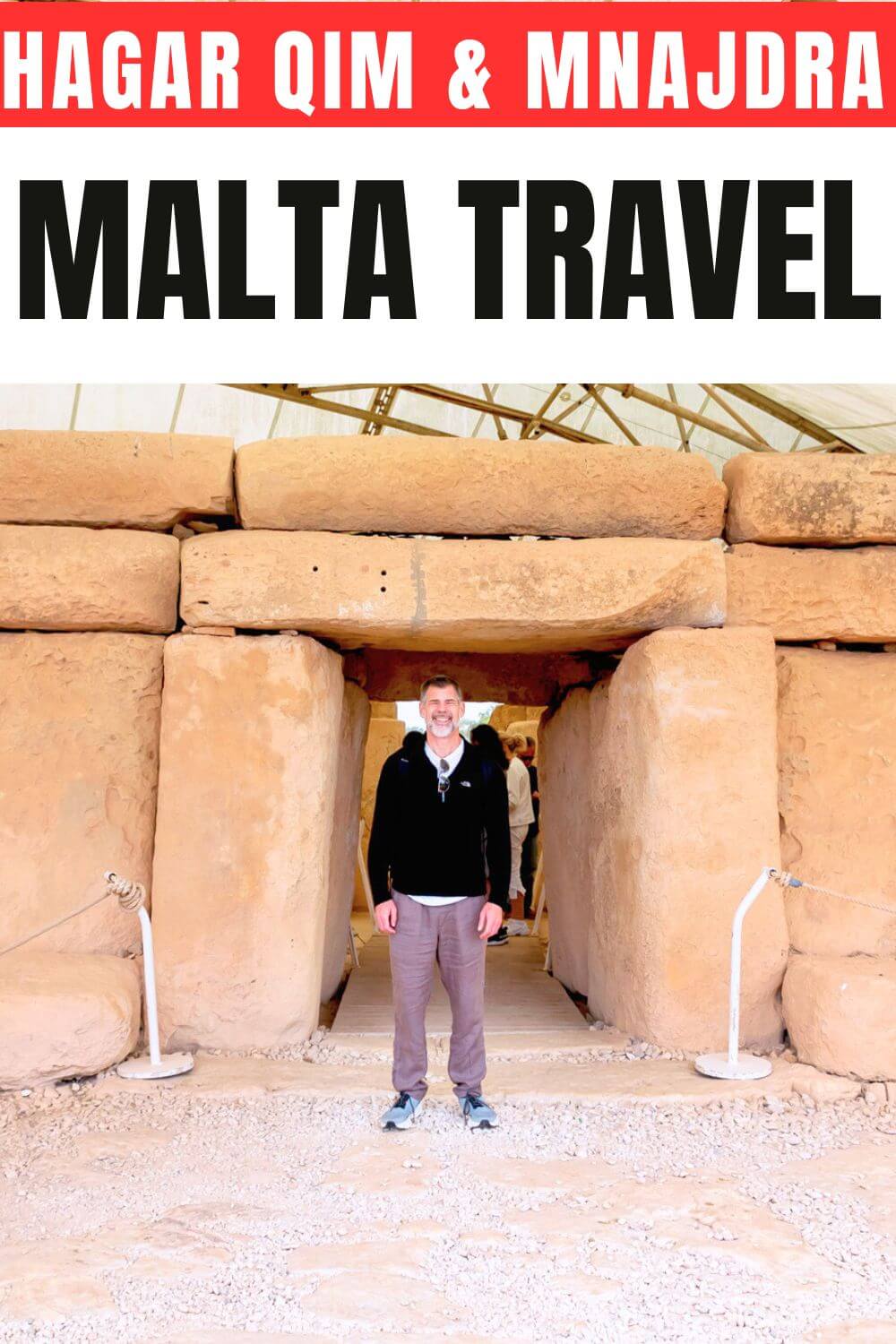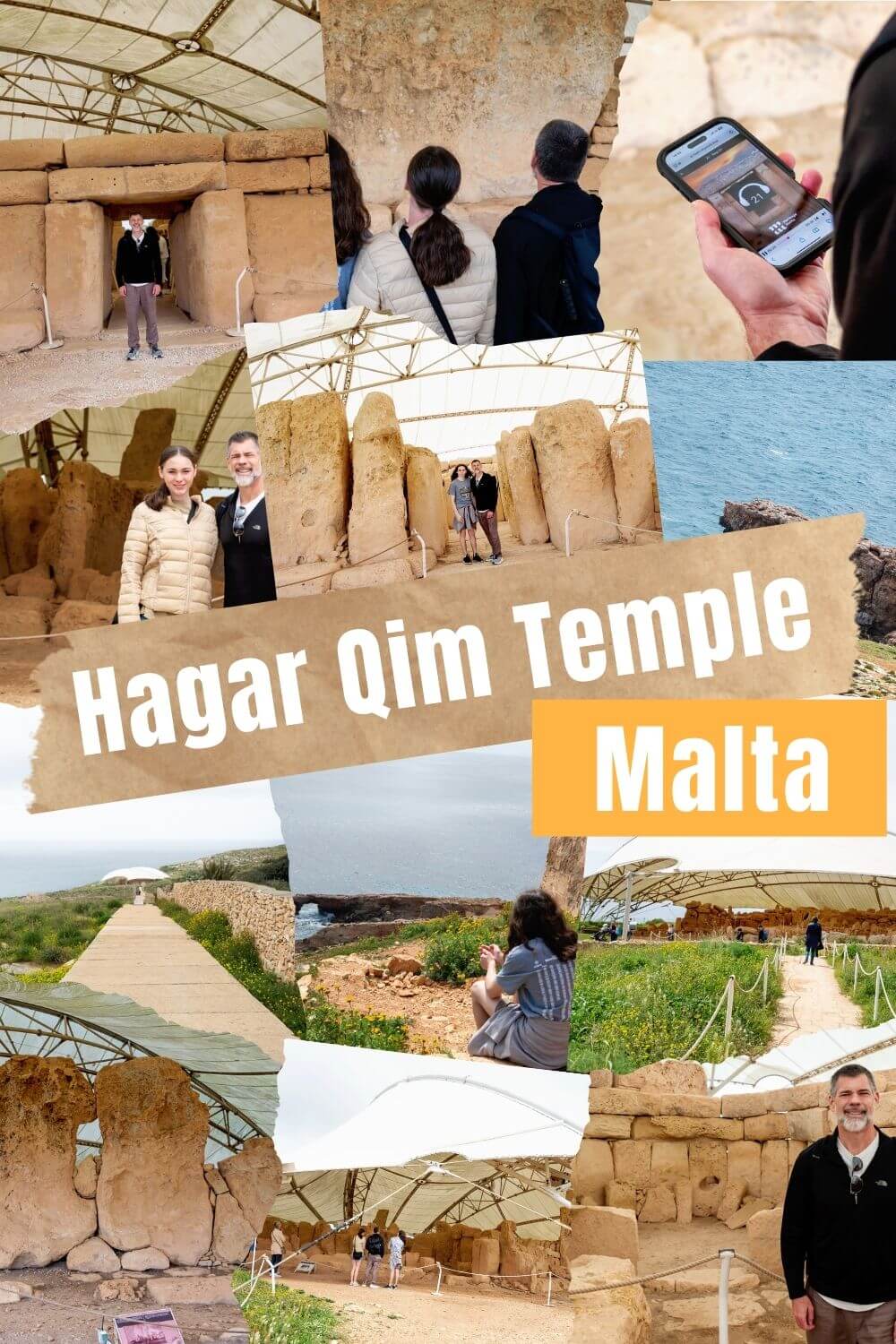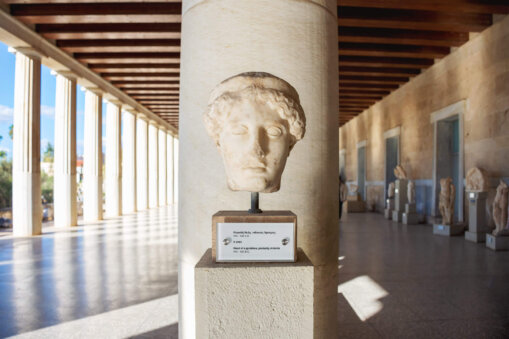We may earn money or products from the companies mentioned in this post. As an Amazon Associate, I earn from qualifying purchases.
We recently got back from a nine-day trip to Paris and Malta over our teenager’s Spring Break. We spent three days in the Montmartre neighborhood of Paris and five days in the town of St. Julian’s on Malta. It was an incredible trip that allowed us to explore the exotic Maltese island chain and learn about the country’s fascinating past. One of our favorite experiences was visiting the prehistoric megalithic temples of Hagar Qim and Mnajdra.
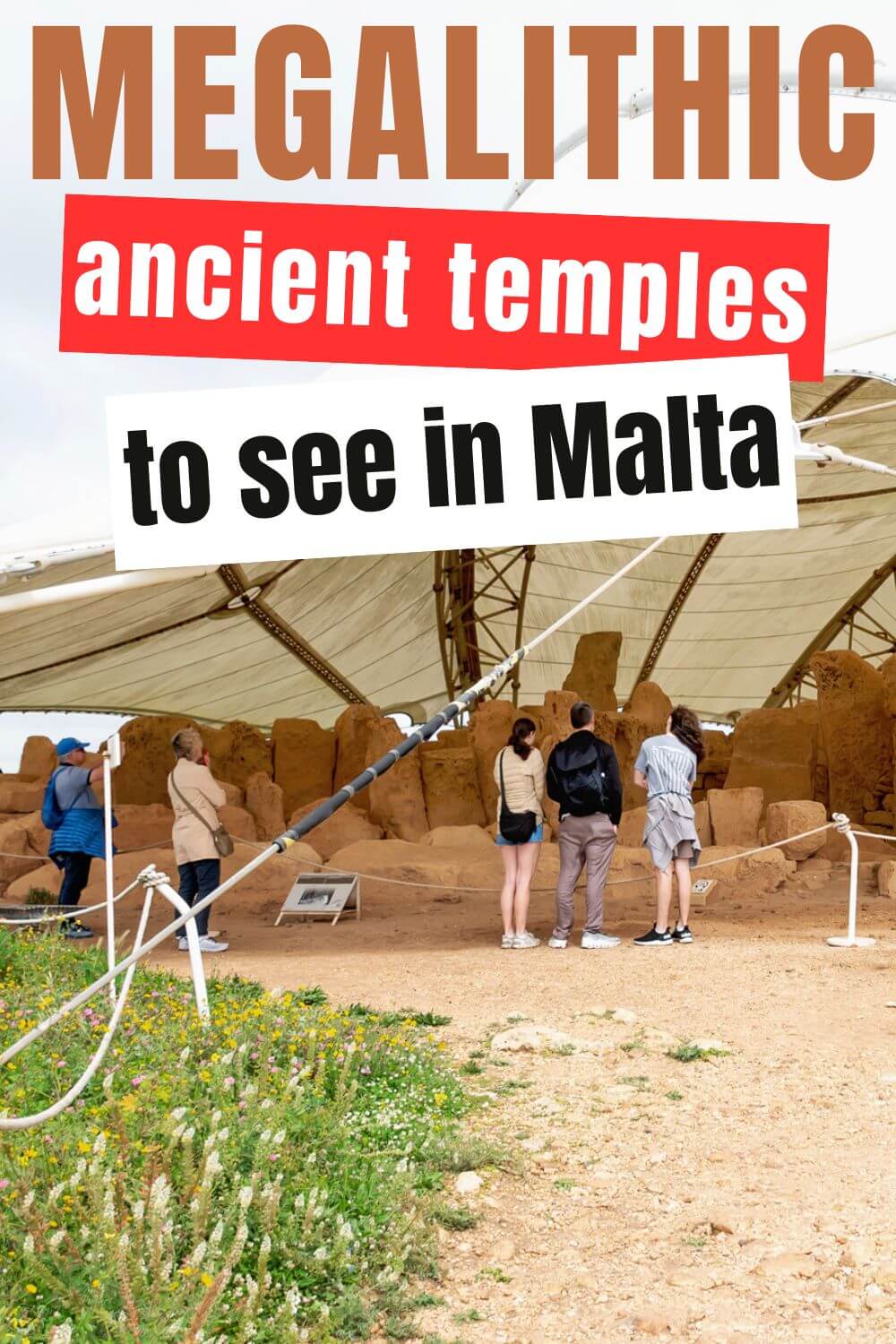
Visiting Hagar Qim And Mnajdra In Malta
Hagar Qim and Mnajdra are some of the oldest religious sites on Earth, so you don’t want to miss them as part of a trip to Malta. In this post, I’ll share our experience and give you some practical tips for visiting this incredible archaeological site in Malta. Additionally, I will go over some of the other must-see sights in the archeological park, like a wonderful hiking trail and a really cool coastal tower.
If you want a truly immersive experience visiting Hagar Qim, I’ll discuss some guided tour options at the end of the post. We love taking guided tours with Get Your Guide when traveling in Europe. Honestly, these tours are a wonderful way to maximize your time and get a first-class experience without the stress of planning anything.
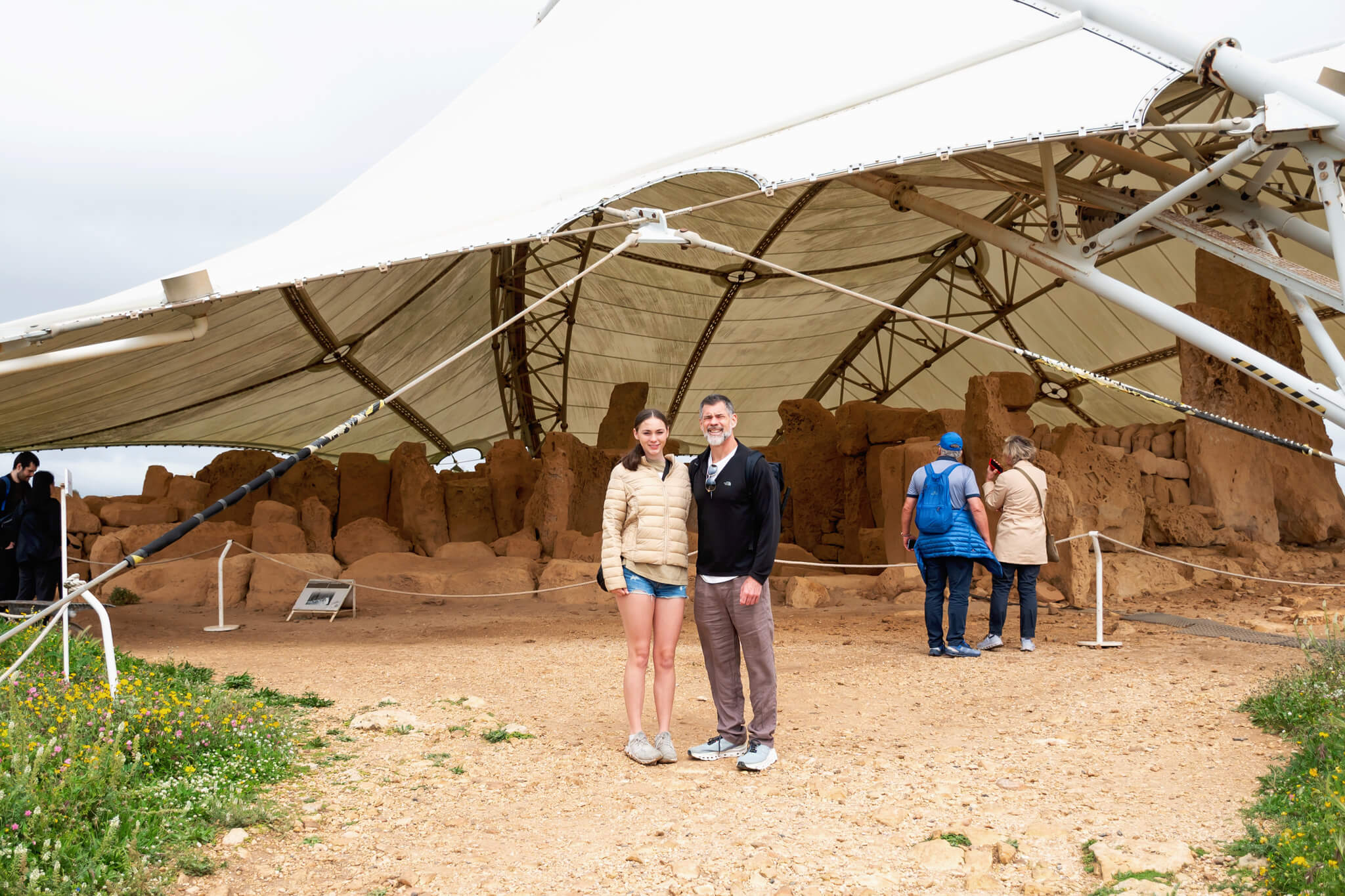
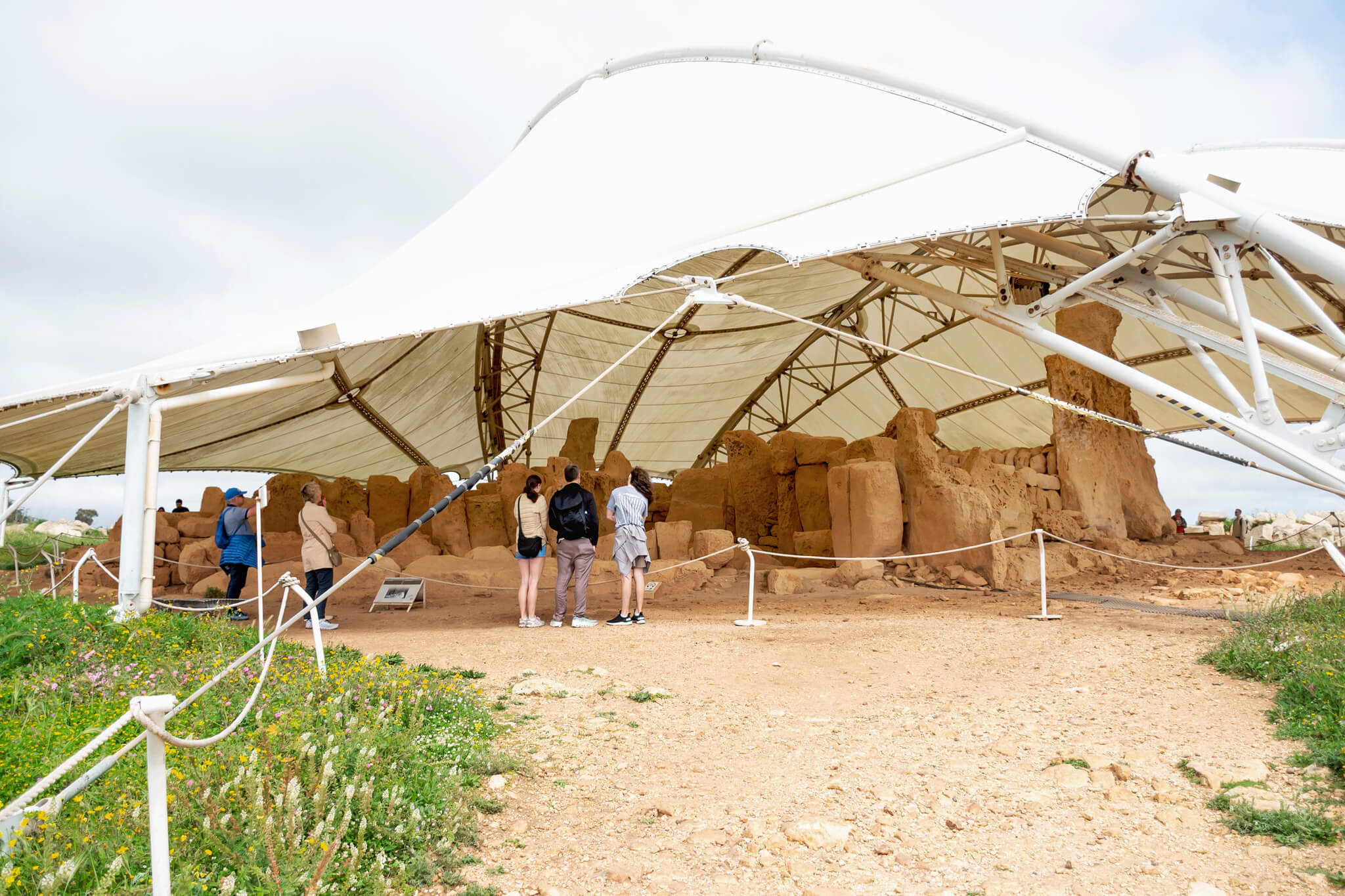
What Are Hagar Qim And Mnajdra?
Hagar Qim means “standing or worshipping stones” in the Maltese language. Also written as Ħaġar Qim, Hagar Qim, and Mnajdra are some of the oldest megalithic sites on Earth. The term “megalithic” means that very large stones were used in the structure’s construction. It is estimated that one of it’s stones weighs 57 tons!
The temple complex, comprising Hagar Qim and Mnajdra, is really old. It’s 1,200 years older than the Pyramids of Giza in Egypt and at least 1,800 years older than Stonehenge in England. So these are some of the most ancient large-scale human-made structures ever found anywhere! It’s humbling to even think of the time scales involved. Hagar Qim and Mnajdra are UNESCO World Heritage sites and are considered masterpieces of prehistoric architecture. Also, they’ve enjoyed renewed fame due to being prominently featured on Graham Hancock’s “Ancient Apocalypse” Netflix series.
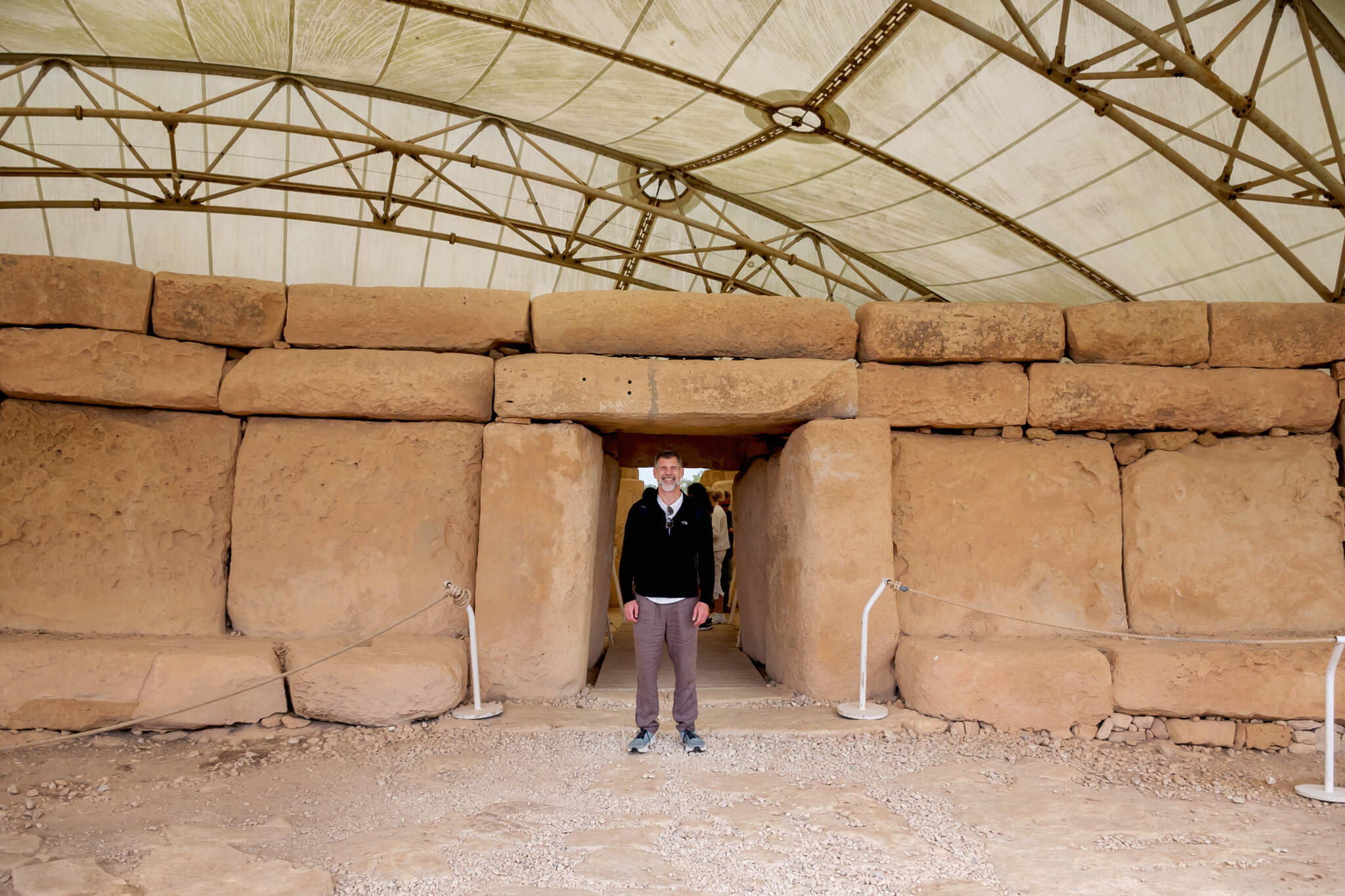
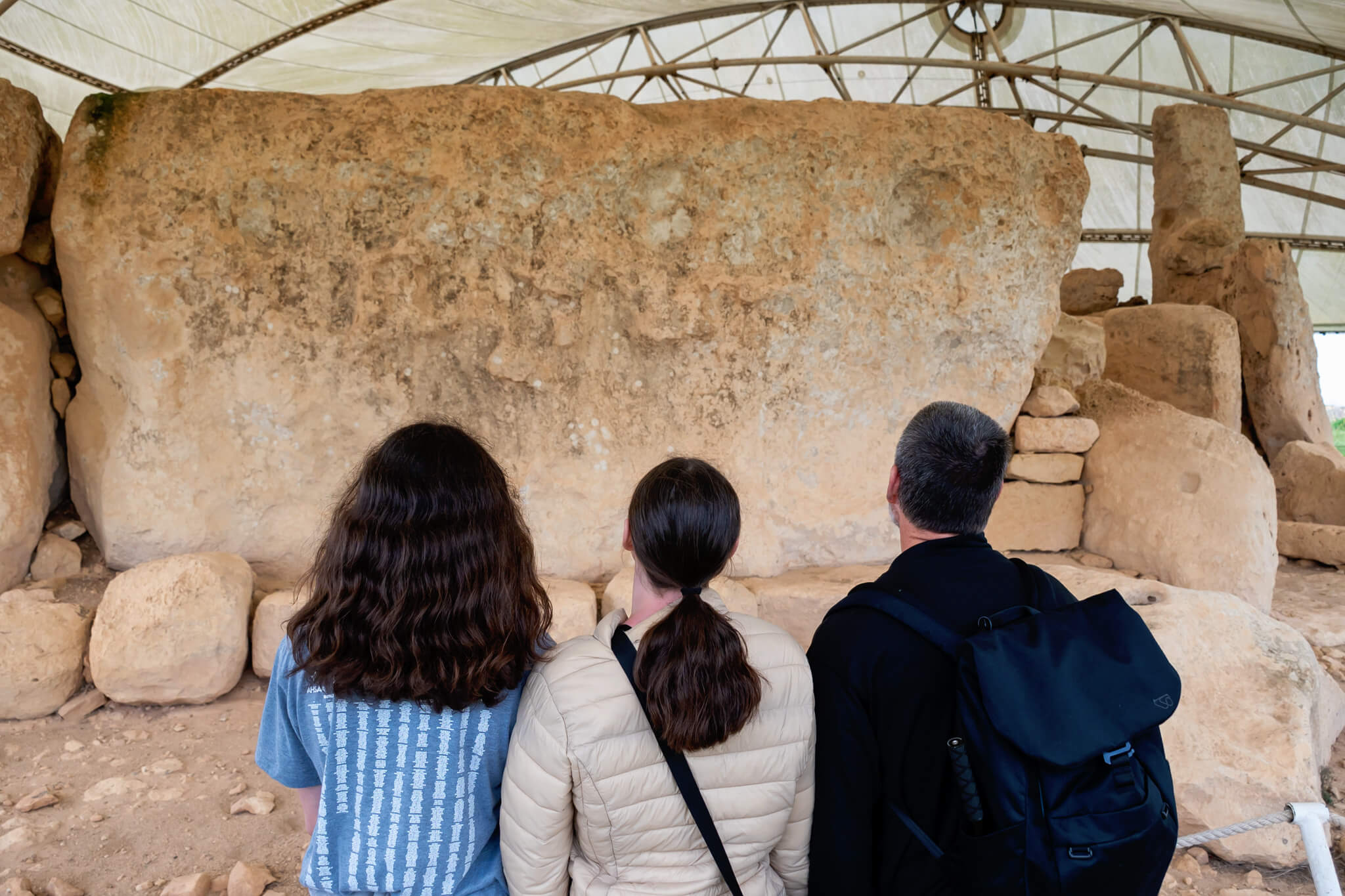
Getting To Hagar Qim & Mnajdra
Hagar Qim and Mnajdra are located on the south side of the island of Malta, just southwest of the town of Qrendi. The area is rural and sparsely populated, situated along the gorgeous, rugged coastal bluffs facing the Mediterranean.
We took an Uber to the Hagar Qim Archeological Park. It took about 20 minutes from St. Julians and cost around 10 Euros. Uber and a company called Bolt are both widely used apps in Malta, and for us, they’re a much better alternative to renting our own car. Driving in Malta is not for everyone, and I decided to write an entire post about our experience getting around Malta.
You can also take the public bus transportation system, which runs through all the major cities and many of the smaller towns across Malta.
In the morning, we went to Hagar Qim and then took an Uber to the medieval town of Mdina, which isn’t too far away. This full-day itinerary worked well and was the perfect way to inexpensively experience the island outside of the more crowded areas like Valletta or Sliema.
The Hagar Qim And Mnajdra Archaeological Park
The Hagar Qim and Mnajdra Archaeological Park on the main island of Malta has a museum, a movie theatre, and a gift shop. Further down toward the coast, along a paved walking path, are the ruins of Hagar Qim and Mnajdra. The park is laced with walking trails that allow you to explore the stark but absolutely beautiful terrain of the Malta coast overlooking the Mediterranean Sea. This day started out cloudy, but then we had beautiful sunshine!
The Hagar Qim Museum
The museum is small but well done. It has numerous exhibits that describe the temple complex and its construction. There are also many interactive displays. You can do fun stuff like step through temple entrances, construct structures with giant foam blocks, and touch different artifacts.
The exhibits explain the archeological work over the last 200 years and highlight the archaeologists and scientists who have studied the area. The site is known for several interesting pieces of art, including human statues, and you can learn more about them here.
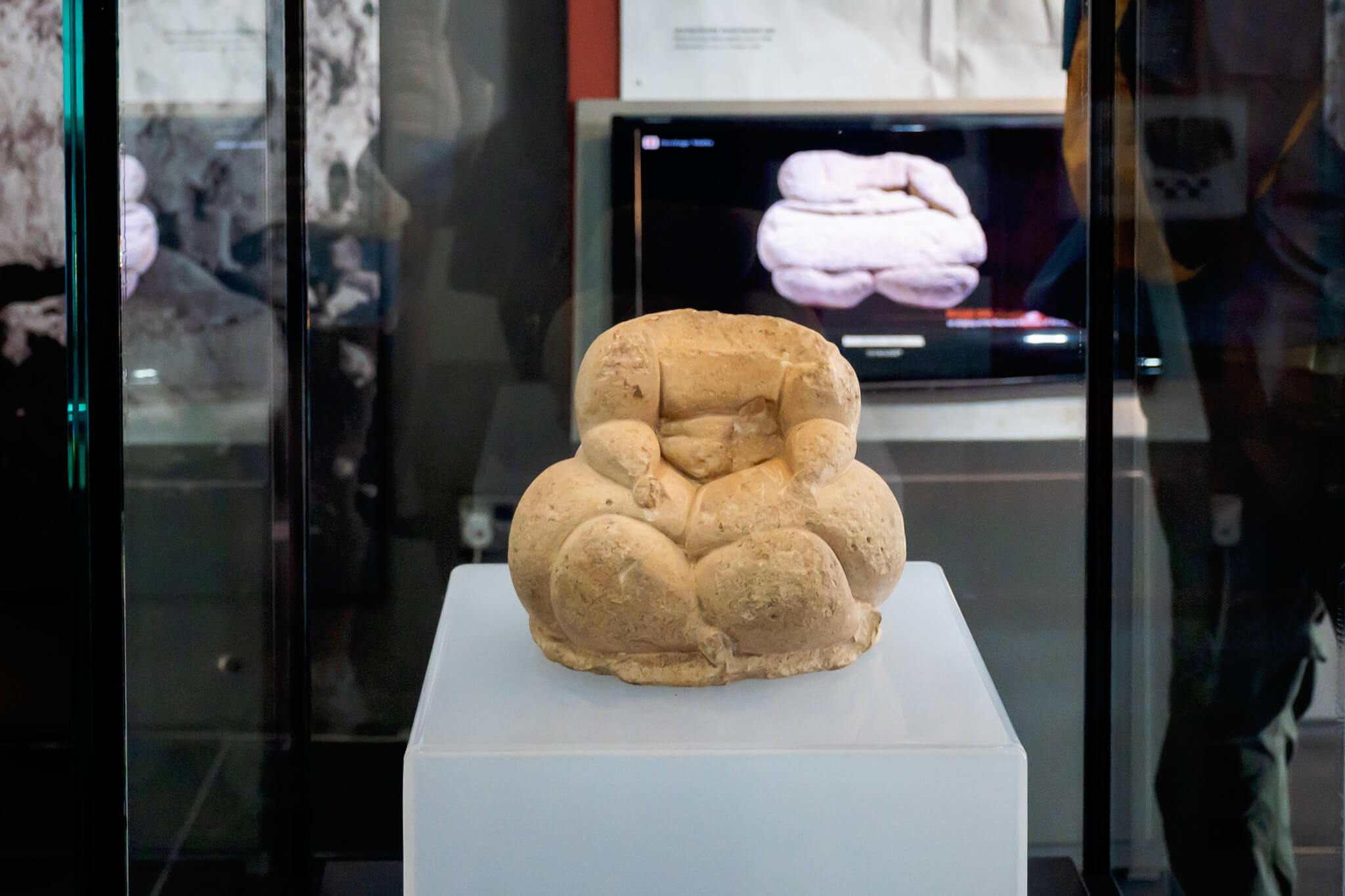
Theatre & Short Movie
There’s also a large modern theatre that periodically plays a 3D (yes, with goggles) movie. The movie highlights the temples across time and provides a great overview of their construction, discovery, and theories about their use by prehistorical civilizations. We all enjoyed it!
Self-Guided Tour of Hagar Qim
As part of the ticket price, you can take an app-based self-guided tour. This tour involves following numerically ordered displays around the museum. The app features an audio narrator who tells you a little bit about each stop. We did this and loved the insight and added context it provided, both in the museum and outside at the temples.
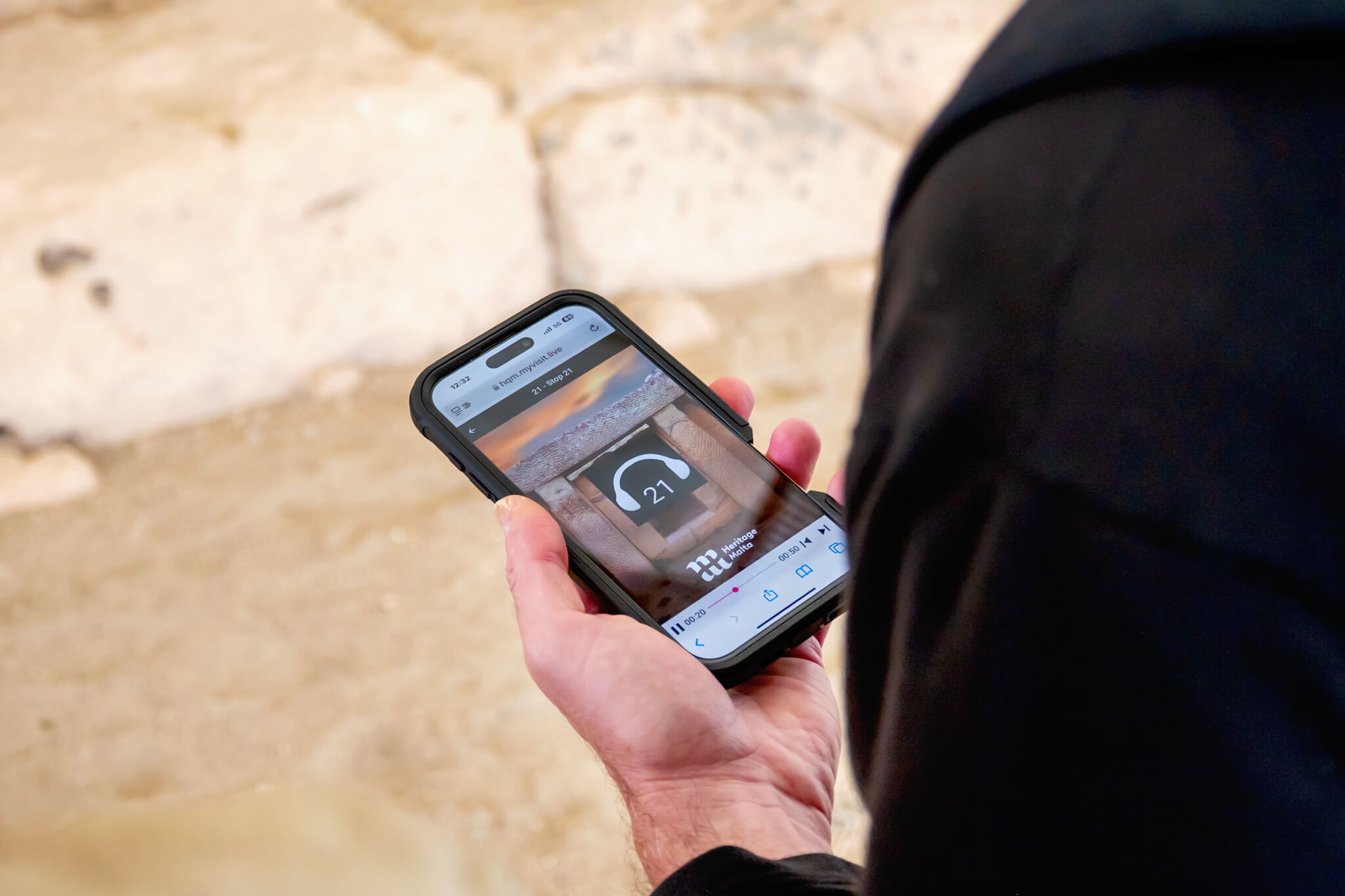
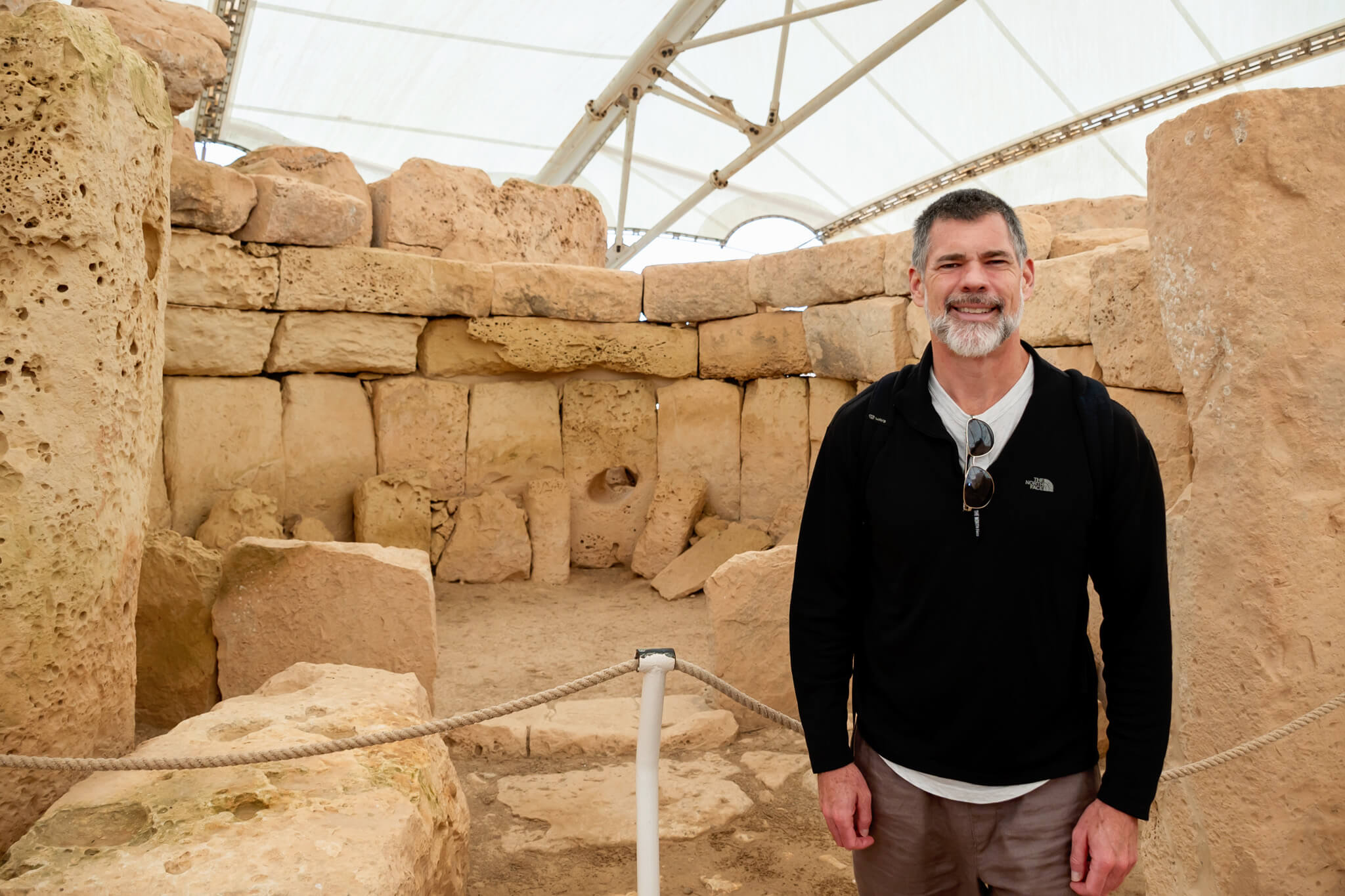
The Hagar Qim Temple Site
Once outside the museum, we walked a short paved path to get to the Hagar Qim temple ruins. The Hagar Qim temple complex consists of a main temple and three smaller structures beside it.
The main temple is made of massive stone blocks that jut from the Earth like crooked teeth. It’s a humbling sight to see these huge stones, many weighing several tons, stacked in an orderly fashion, making walls and passages. When first constructed, much of the temple was covered by a roof, which is now gone.
From the museum and our self-guided tour, we learned the roof was built using a technique called “cobelling.” We admired the tremendous effort some ancient people put into making these huge stone walls and passageways, stone-paved floors, and portholes cut into the boulders.

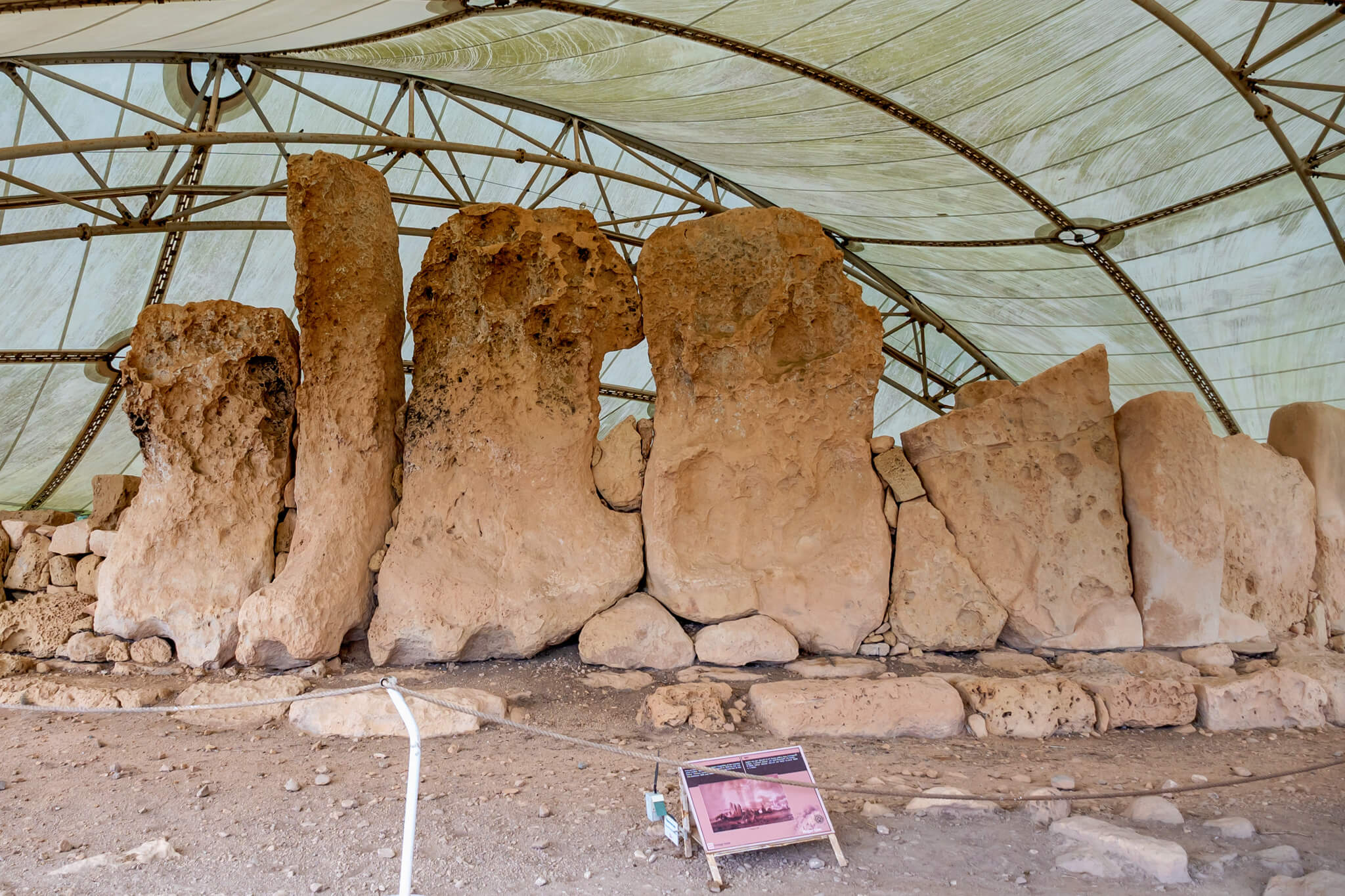
You can walk through a portion of the megalithic temple and see ancient interior artwork, and many of the locations have associated stops on the self-guided tour app. A few of the artifacts, like statues and carved stones, are copies, with the originals now housed at the Malta National Archaeological Museum. A path stretches around the exterior perimeter of the ruins, where you can really get an idea of the herculean work that went into its construction.
Large tents now shelter both Hagar Qim and Mnajdra from the elements. These massive tents stretch out over the entire ruin, protecting it. When the site was first excavated two centuries ago, rain, wind, and sun began to deteriorate the soft limestone rocks quickly. The tent shelters were constructed in 2008.
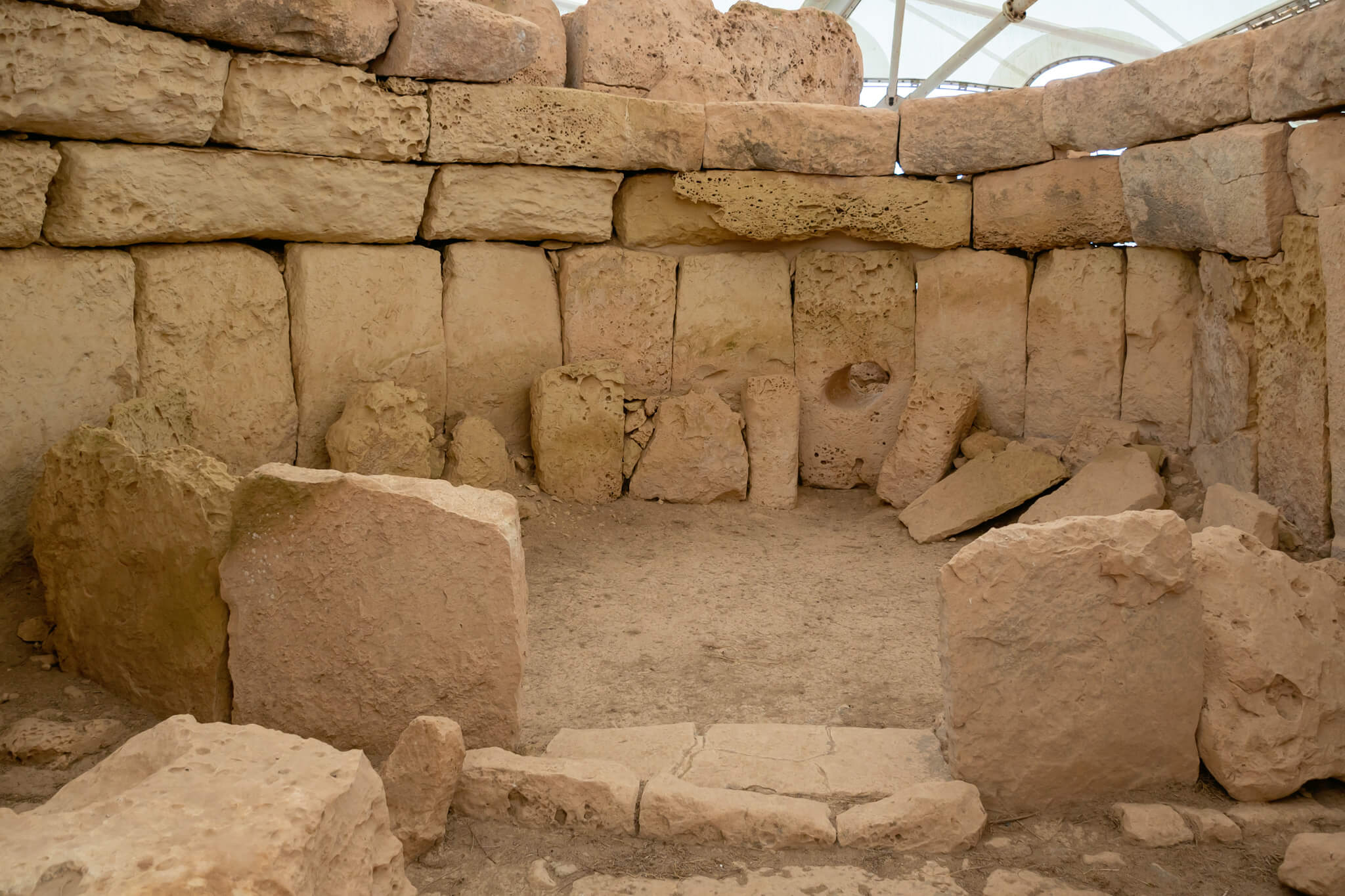
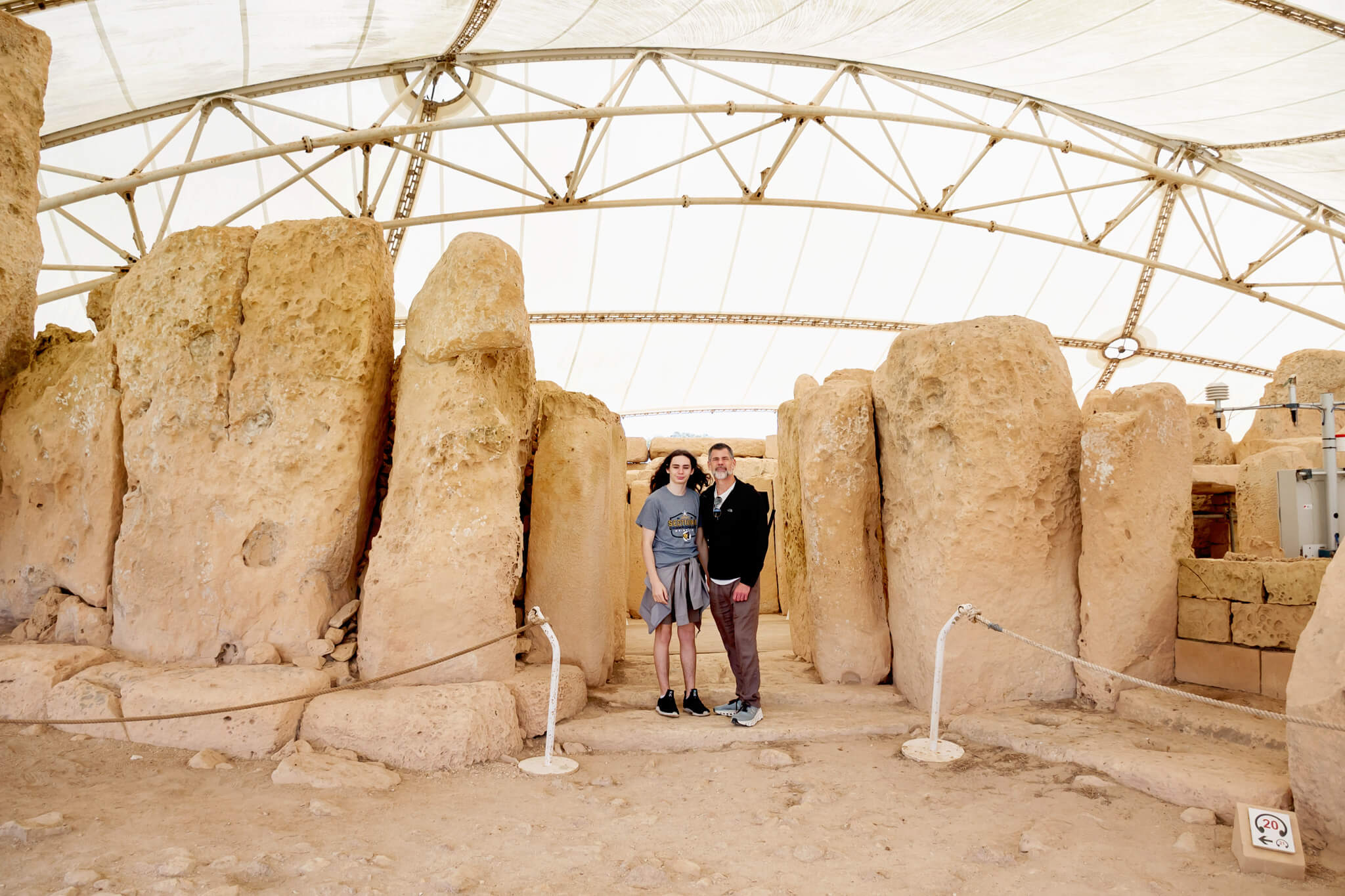
The Mnajdra Temple Site On Malta
About 500 meters south of Hagar Qim, along a paved walking trail, is Mnajdra. This ancient site consists of three ancient temple structures built using a mix of globigerina and coralline limestone. The oldest one is a small temple with three apses (these are little curved rooms branching off the main one).
Next came the South Temple, which has a beautiful concave facade. Its doorway lines up perfectly with the sunrise during the spring and autumn equinoxes. During the winter and summer solstices, the rising sun beams through the entrance and lights up two decorated stone slabs inside the first chamber. It basically works as an ancient Maltese sun tracker! The temples also have little hidden chambers tucked into the thick walls, along with a central passage that leads to more rooms on either side.
It’s wild to think how advanced the design and astronomy were for something built thousands of years ago. We enjoyed walking around the ruins and taking in the pristine beauty of the park and the surrounding coastline.
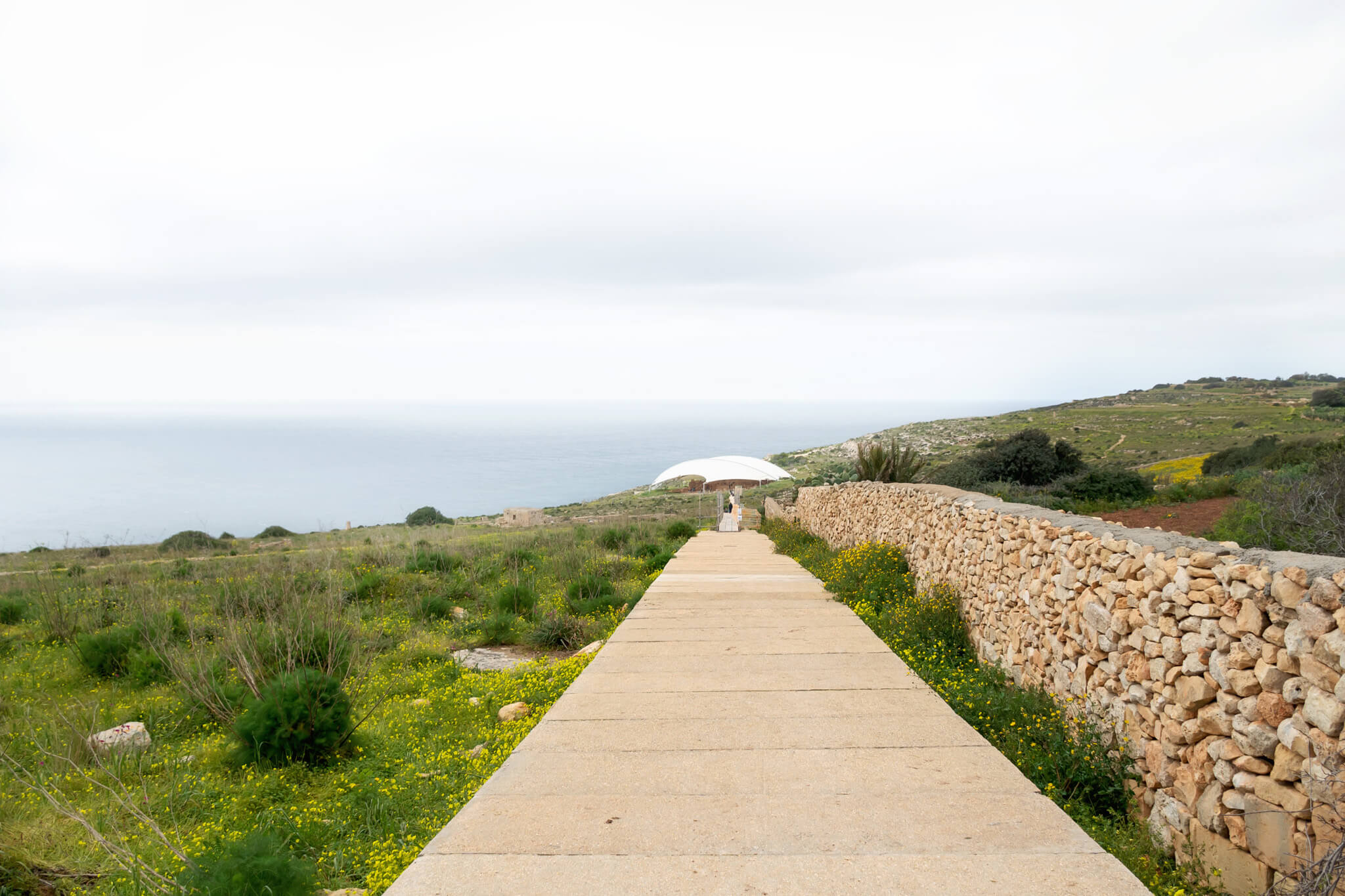
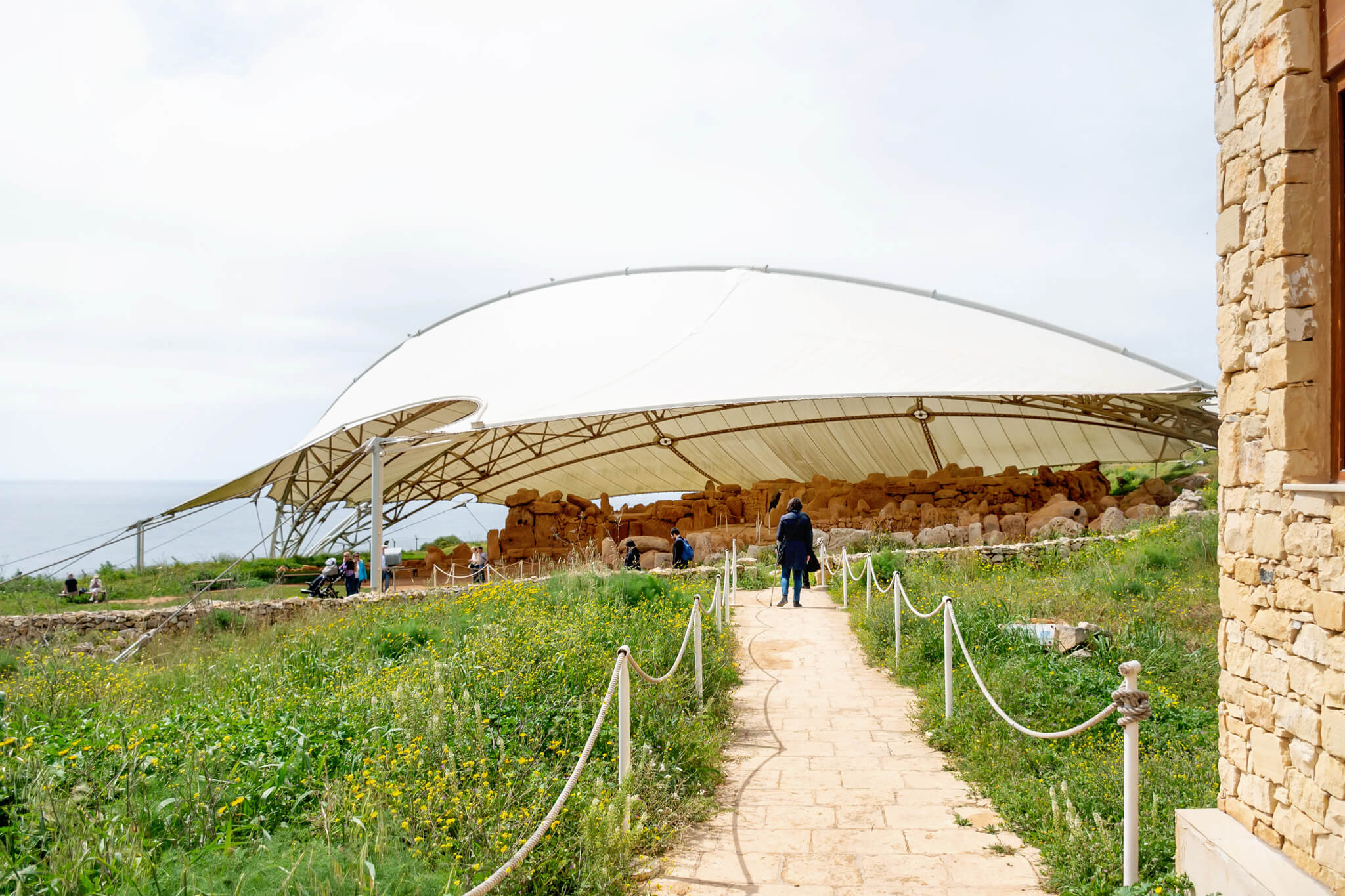
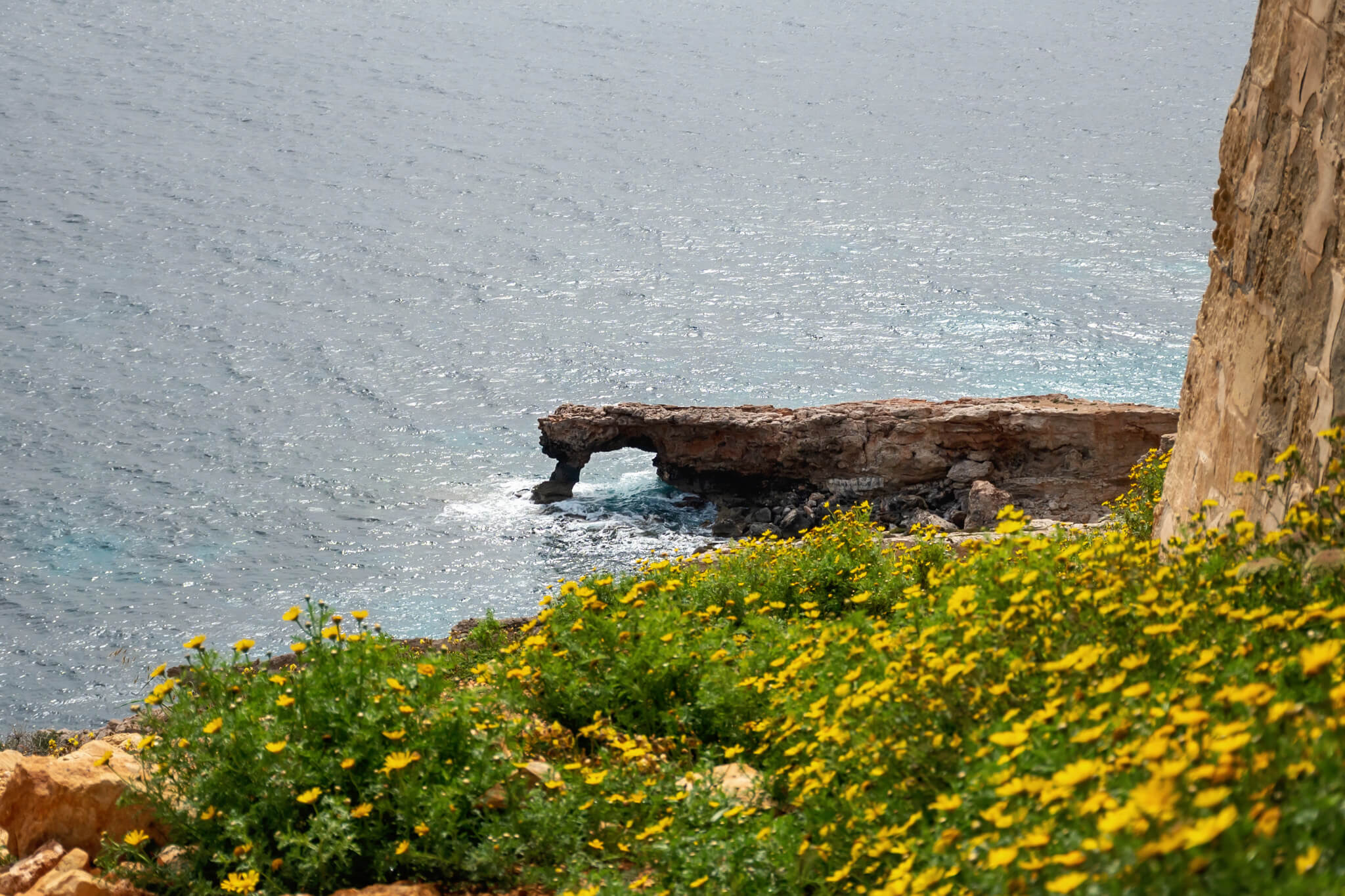
Hiking Trail + Hagar Tower + Congreve Memorial + Filfla
After exploring Mnajdra, we decided to walk eastward over the sparsely vegetated rocky ground toward a huge structure in the distance. I’m so glad we did! We ended up discovering a hiking trail that offered some absolutely incredible views of Malta’s gorgeous southern coast.
Along the way, we saw some pretty cool things, like Hagar Tower. Ħamrija Tower was built in 1659 on the site of a medieval watch post and has been recently restored to its present condition. We got some amazing photographs looking out over the blue waters of the Mediterranean in the afternoon sun.
In the distance, about three miles off the coast, we could see a small island called Filfla. Filfla is uninhabited and only 9 acres in size. It rises like an emerald from the surrounding sea. The whole thing felt surreal and gave off “edge-of-the-world” vibes. We also discovered a stone monument called the Congreve Memorial, dedicated to Sir Walter Norris Congreve, the Governor of Malta from 1924-1027. The memorial marks the location where he was buried at sea halfway between the coast of Malta and Filfla.
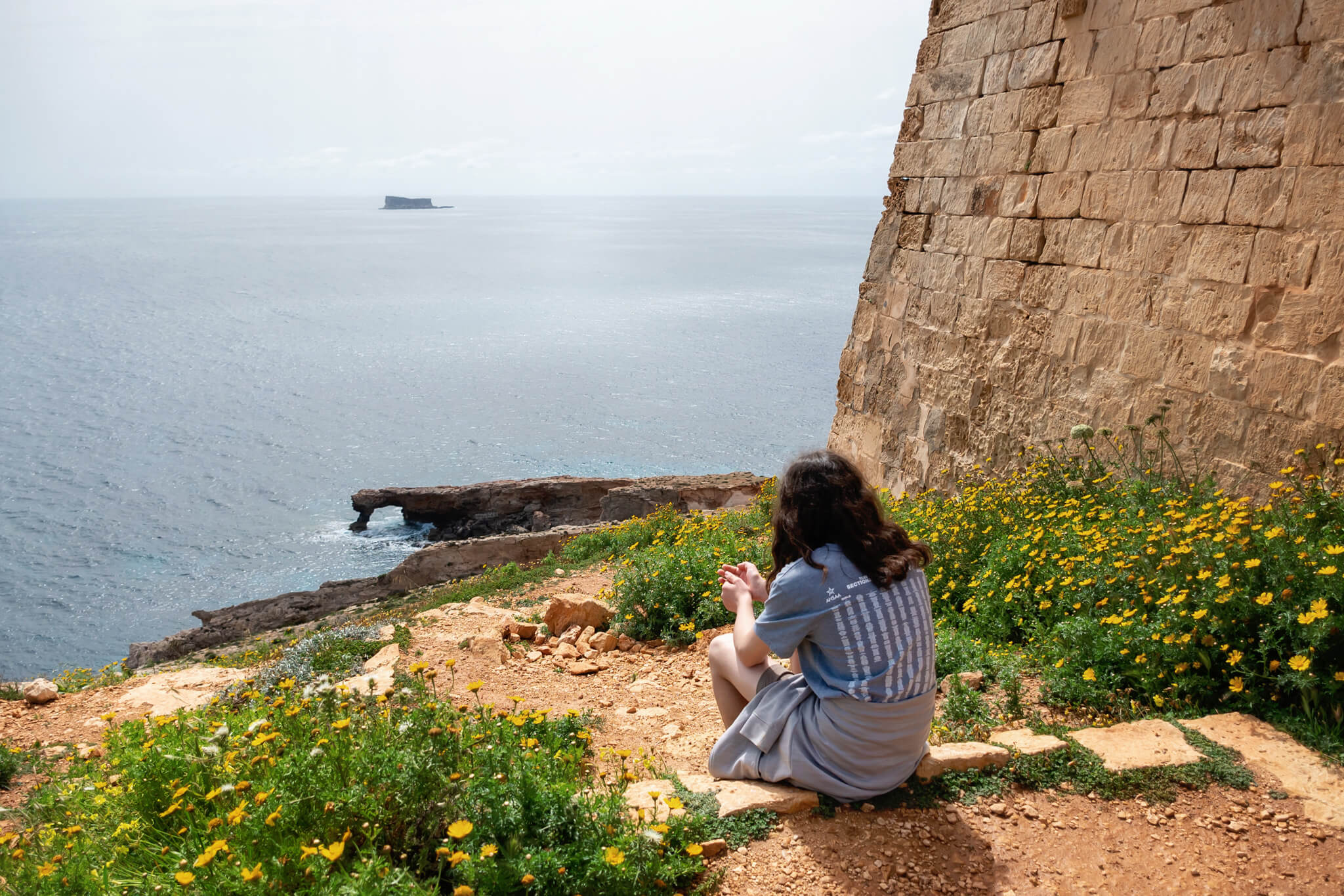
3 Tours Of The Prehistoric Temples Of Malta
Malta is an incredible place to learn about some of the world’s oldest human-made structures. If you want to channel your inner archeologist and discover even more about Malta’s amazing history, there are a number of guided tours available.
Many of these tours include hotel pick-up and drop-off, which makes the whole experience a lot easier. Be sure to read the description. These Get Your Guide tours are all rated at least 4 out of 5 stars and have great reviews. Be sure to read each tour page carefully, as each tour has different amenities and restrictions.
Prehistoric Temples And Highlights Of The South
Prehistoric Temples, Limestone Heritage & Blue Grotto
Prehistoric Temples Of Malta Tour
Hagar Qim Tickets & Opening Hours
The Hagar Qim Archeological Park requires tickets, which can be purchased at the main visitor center at the park’s entrance. Tickets are discounted for seniors, youth, and children. Tickets for Heritage Malta members are free.
Currently, the park is open every day from 9 a.m. to 7 p.m. However, opening hours may vary, so be sure to visit the Heritage Malta website before you go.
For more information about visiting Hagar Qim, visit the Hagar Qim and Mnajdra Archaeological Park website.
You can also buy a Malta Heritage Pass, which includes access to several historical sites on the island of Malta, including the prehistoric temples of Hagar Qim and Mnajdra!

We Highly Recommend Exploring Hagar Qim and Mnajdra
Visiting the Hagar Qim and Mnajdra Archaeological Park was a bucket-list trip for us, especially for my husband Matt. Seeing the massive stones raised in prehistory was a humbling and inspiring reminder of the vast sweep of humanity’s history and development.
I absolutely recommend adding this to your Mata itinerary. It makes a great educational destination for solo travelers and families alike. Consider pairing it with a visit to the nearby Blue Grotto and the really beautiful fortified medieval village of Mdina (of Game of Thrones fame) to make a special day of adventure and exploration.
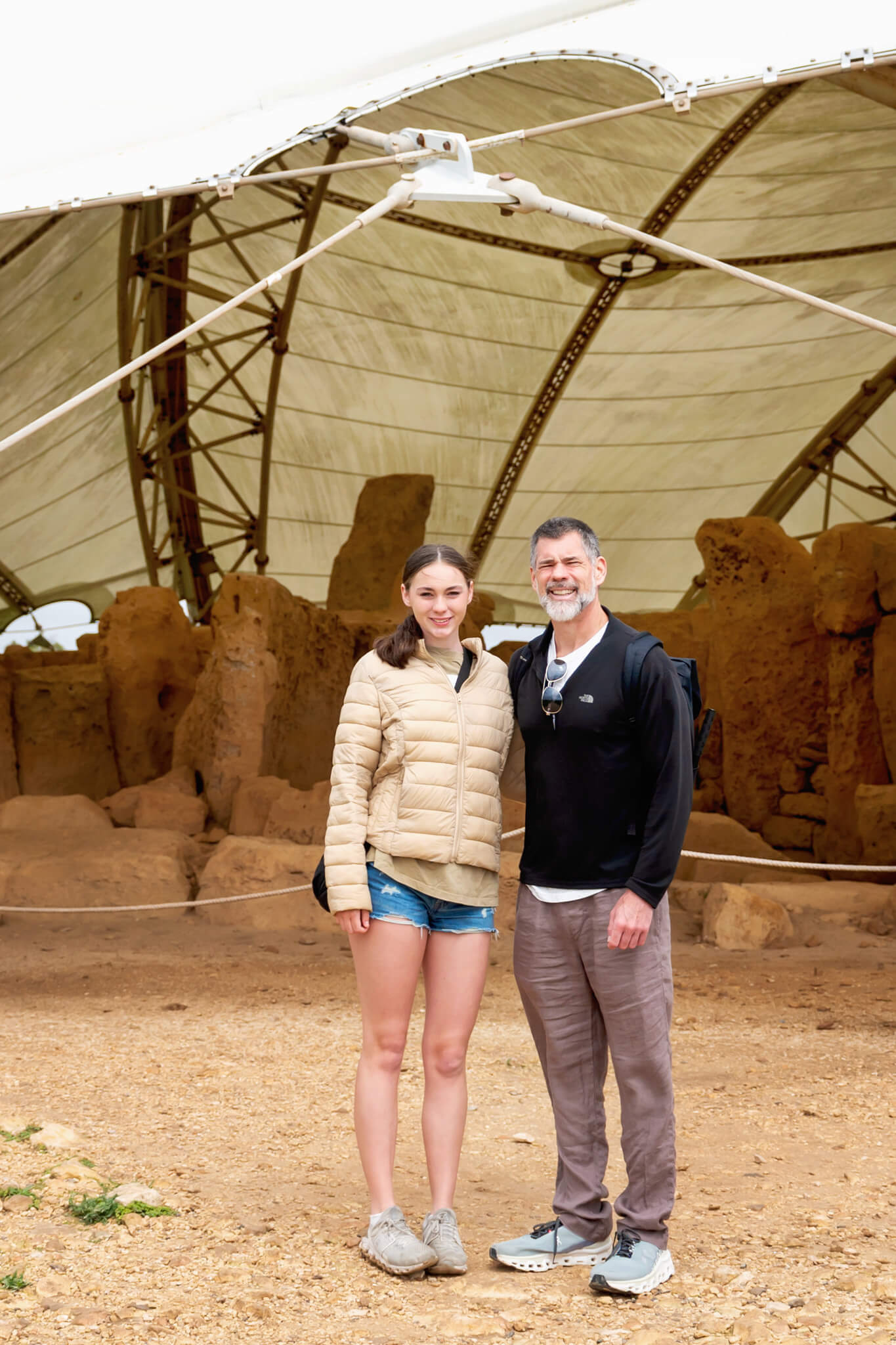
More European Travel Inspiration
Our family loves exploring Europe and beyond! If you are planning a trip to Europe, make sure to browse our blog for more first-hand travel tips from our European adventures. Click here to view all of our travel blog posts, and here are some specific countries you may enjoy reading more about!
Pin This Post About Malta’s Hagar Qim and Mnajdra For Later
